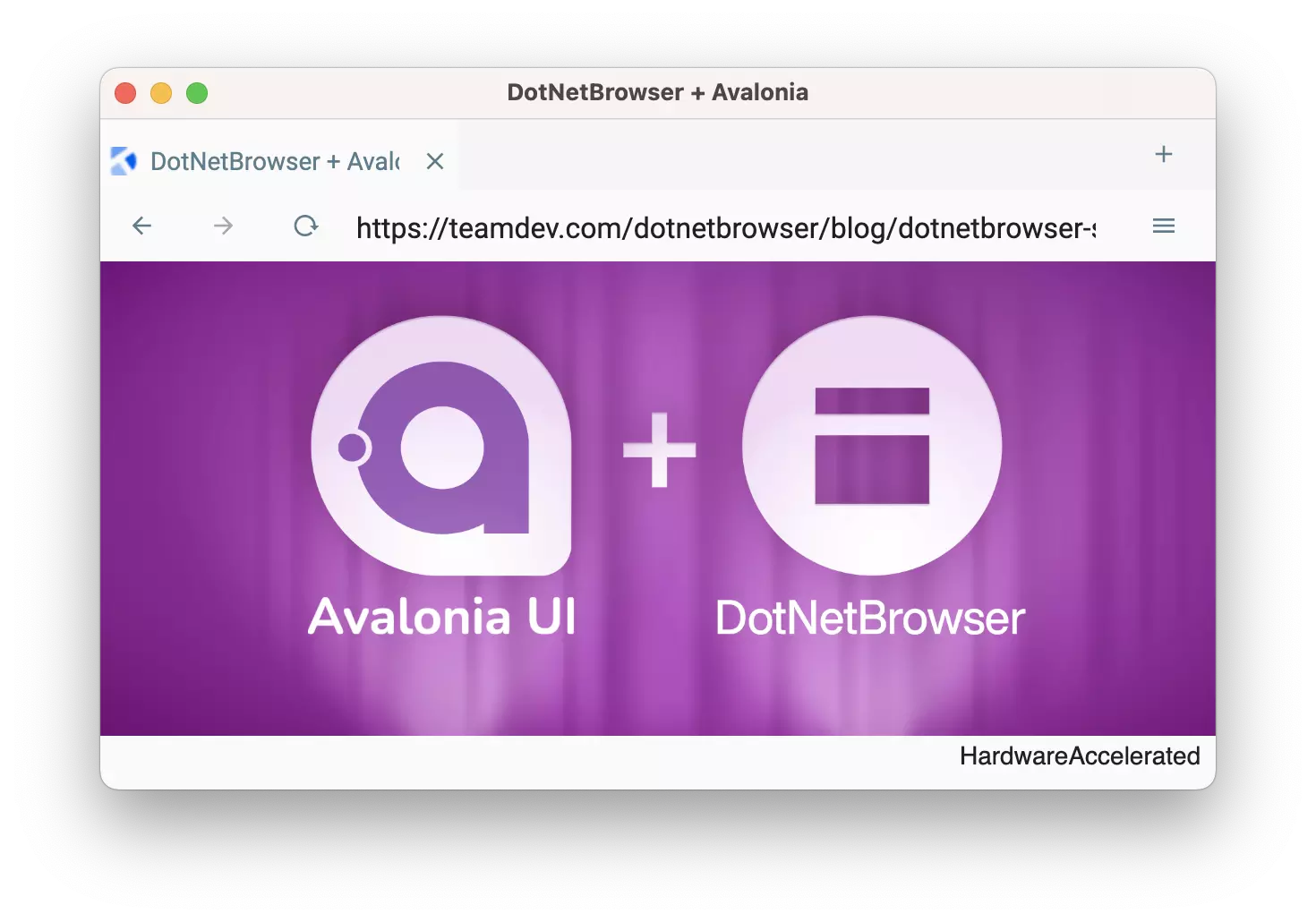With yet another integration in the toolbox, DotNetBrowser has become the most versatile web view control for .NET on Windows, Linux, and macOS.
This integration brings the .NET community a new tool and new capabilities. With a powerful web view, .NET and Avalonia UI are on the fast track to being the number one technology for building cross-platform desktop applications.
We are proud to be a part of these events and want to tell you how this integration came into reality.
Try it yourself
We prepared a demo project, a simple browser with tabs and navigation.
Get the trial license in one click, and check it out on GitHub.
Sending…
Sorry, the sending was interrupted
Please try again. If the issue persists, contact us at info@teamdev.com.
Your personal DotNetBrowser trial key and quick start guide will arrive in your Email Inbox in a few minutes.
A cross-platform journey

Avalonia application with DotNetBrowser on macOS
In 2019, a small team of engineers gathered in our cozy office to kick off the next iteration of DotNetBrowser — version 2. By this time, .NET had already become a cross-platform technology, and we knew from the start that DotNetBrowser 2.0 should too.
In 2022, we released the first version of DotNetBrowser that also worked on Linux and macOS. In this release, we added three more suites of Chromium binaries and enabled our customers to use the browser off-the-screen.
A browser off-the-screen is undoubtedly useful, but only a handful of customers use DotNetBrowser this way. The last leg of the journey was to find the cross-platform UI framework we’re ready to commit to.
Choosing Avalonia
We considered numerous factors when selecting a UI framework for the new integration. And after thorough research, Avalonia UI emerged as the only choice, and here’s why:
- It supports both Linux and macOS.
- It is friendly to WPF developers, who can reuse their XAML skills.
- It is a mature framework with a decade of active development.
- It has a large and engaged global community of developers.
Avalonia is an excellent technology, but integrating DotNetBrowser with a new framework is always hard work. Our demands are not standard, and our bar is high: DotNetBrowser must function identically in two rendering modes and on three operating systems. We didn’t know at the start: will we pull this off with Avalonia UI?
Challenges and collaboration
The hardware-accelerated rendering mode always gave us hard times, and it was no exception in Avalonia UI. We quickly realized that Avalonia lacked a couple of very specialized features when testing it across the platforms.
It wasn’t a surprise because these were very particular platform-specific things. People rarely know about them, but they’re critical for DotNetBrowser. And so we reached out to the Avalonia team.
The Avalonia UI people reacted immediately. We were pleased to meet with a very approachable and knowledgeable team. The engineers talked directly to each other, and we resolved all issues within a couple of weeks. They gave us great advice, and we even contributed a little to the framework.
Conclusion
DotNetBrowser was looking to become a cross-platform view control for the .NET. When picking a UI toolkit, we have chosen Avalonia as a widely adopted framework that supports both Linux and macOS.
The Avalonia UI team’s friendly, easy-going nature made it a pleasant journey. In a positive and collaborative atmosphere, we overcame technical challenges within weeks.
We believe that our collaboration broadens the adoption of our technologies and is a significant step forward for the whole .NET ecosystem.